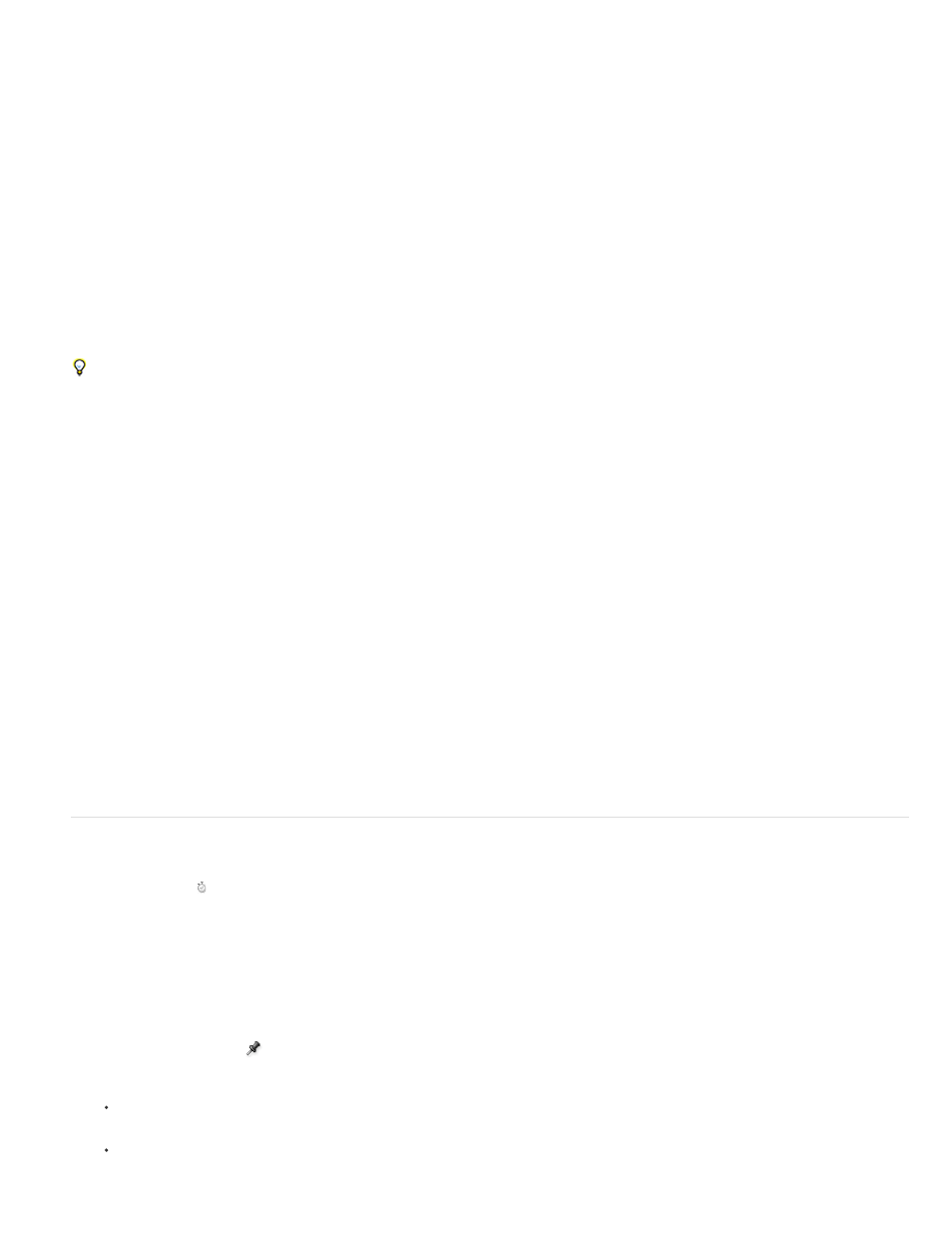Manually animate an image with the puppet tools – Adobe After Effects User Manual
Page 258

Note:
If a single animated Deform pin is selected, its Position keyframes are visible in the Composition panel and Layer panel as a motion path. You can
work with these motion paths as you work with other motion paths, including setting keyframes to rove across time. (See Smooth motion with
roving keyframes.)
You can have multiple meshes on one layer. Having multiple meshes on one layer is useful for deforming several parts of an image individually—
such as text characters—as well as for deforming multiple instances of the same part of an image, each with a different deformation.
The original, undistorted mesh is calculated at the current frame at the time at which you apply the effect. The mesh does not change to
accommodate motion in a layer based on motion footage, nor does the mesh update if you replace a layer’s source footage item.
Don’t animate the position or scale of a continuously rasterized layer with layer transformations if you are also animating the layer with the
Puppet tools. The render order for continuously rasterized layers—such as shape layers and text layers—is different from the render order for
raster layers. You can precompose the shape layer and use the Puppet tools on the precomposition layer, or you can use the Puppet tools to
transform the shapes within the layer. (See Render order and collapsing transformations and Continuously rasterize a layer containing vector
graphics.)
The motion created by the Puppet tools is sampled by motion blur if motion blur is enabled for the layer and the composition, though the number
of samples used is half of the value specified by the Samples Per Frame value. (See Motion blur.)
You can use expressions to link the positions of Deform pins to motion tracking data, audio amplitude keyframes, or any other properties.
Online resources for the Puppet tools
For a video tutorial on using the Puppet tools, go to the
.
Trish and Chris Meyer give tips for using the Puppet tools on the
Aharon Rabinowitz provides a tutorial on the
shows a creative way to use the Puppet tools with a particle generator to
simulate airflow over a car.
Eran Stern provides a video tutorial on the
that shows how to duplicate an object using the Puppet Pin tool.
Robert Powers provides a video tutorial on the
demonstrates the use of parenting and the Puppet tools to animate
a character.
Dave Scotland provides a video tutorial on the
that demonstrates how to create a looping character animation using the Puppet
tools.
Kert Gartner provides a video tutorial on the
that shows how to add organic motion to images using the wiggle expression
method on Puppet pins.
Daniel Gies provides
which he demonstrates the use of inverse kinematics and the Puppet tools to rig and
animate a character.
Manually animate an image with the Puppet tools
The stopwatch switch is automatically set for the Position property of a Deform pin as soon as the pin is created. Therefore, a keyframe is set or
modified each time that you change the position of a Deform pin. This auto-keyframing is unlike most properties in After Effects, for which you
must explicitly set the stopwatch switch by adding a keyframe or an expression to animate each property. The auto-animation of Deform pins
makes it convenient to add them and animate them in the Composition panel or Layer panel, without manipulating the properties in the Timeline
panel.
1. Select the layer that contains the image to animate.
2. Using the Puppet Pin tool
, do one of the following in the Composition panel or the Layer panel:
Click any nontransparent pixel of a raster layer to apply the Puppet effect and create a mesh for the outline created by auto-tracing the
alpha channel of a layer.
Click within a closed path on a vector layer to apply the Puppet effect and create a mesh for the outline defined by that path.
254
